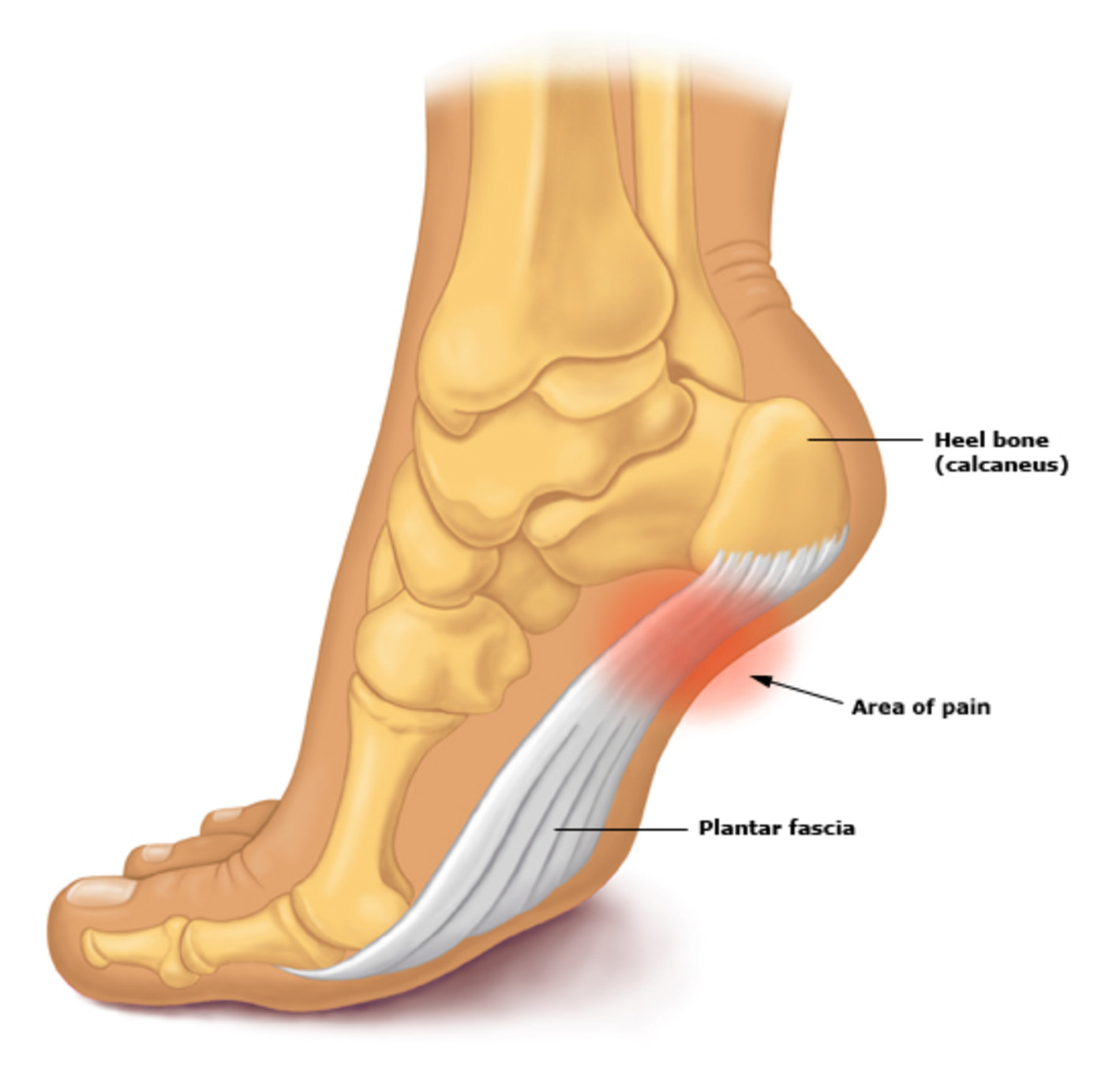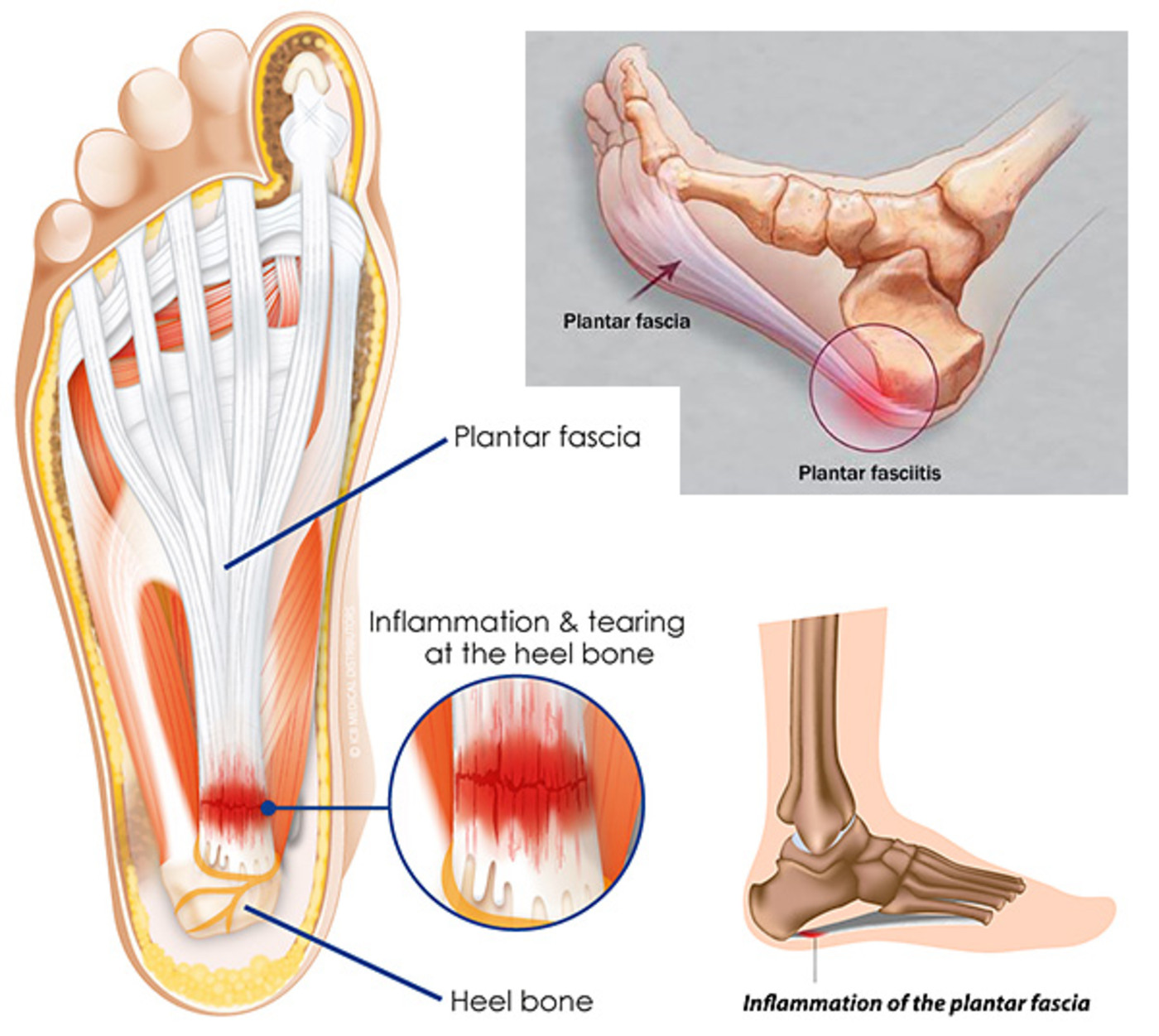Heel Pain
When walking, your heels repeatedly hit the ground with considerable force. They have to be able to absorb the impact and provide a firm support for the weight of the body.
When pain develops in the heel, it can be very disabling, making every step a problem, affecting your posture. It can be treated through various methods including Shockwave Therapy.
There are various types of heel pain. Some of the most common are: heel spurs (plantar fasciitis); heel bursitis and heel bumps.
Common symptoms
Heel Spurs: The pain is usually worst on standing, particularly first thing in the morning when you get up. It is relatively common, though usually occurring in the over forty's age group. There are no visible features on the heel but a deep localised painful spot can be found in or around the middle of the sole of the heel. Although it is often associated with a spur of bone sticking out of the heel bone (heel spur syndrome), approximately ten per cent of the population have heel spurs without any pain.
Heel Bursitis: Pain can be felt at the back of the heel when the ankle joint is moved and there may be a swelling on both sides of the Achilles tendon. Or you may feel pain deep inside the heel when it makes contact with the ground.
Heel Bumps: Recognised as firm bumps on the back of the heel , they are often rubbed by shoes causing pain.
Recommended treatments
Heel Spurs
Cushioning for the heel is of little value. Your chiropodist/podiatrist may initially apply padding and strapping to alter the direction of stretch of the ligament. This is often successful at reducing the tenderness in the short term. Your chiropodist/podiatrist may suggest a course of deep heat therapy to stimulate the healing processes, allowing damage to respond and heal faster. In the long term, your chiropodist/podiatrist may prescribe special insoles (orthoses) to help the feet to function more effectively, thereby reducing strain on the ligaments and making any recurrence less likely.
If pain from heel spurs continues, you may be referred to your GP who can prescribe an oral non-steroidal anti-inflammatory. Alternatively, localised hydrocortisone injection treatment may be given by your GP or an appropriate chiropodist/podiatrist. If pain persists, surgery may be considered.
Heel Bursitis
In most cases, attention to the cause of any rubbing, and appropriate padding and strapping by your chiropodist/podiatrist will allow the inflammation to settle. If infection is present, your chiropodist/podiatrist will refer you to your GP for antibiotics.
Heel Bumps
Adjustments to footwear is often enough to make them comfortable. A leather heel counter and wearing boots may help. However, if pain persists, surgery may be necessary.


Cracked Heels
Cracked heels develop when the skin around your heels splits apart. This can be caused by long term wear of open slippers or sandals; being overweight; skin disorders such as Dermatitis; Eczema; and Diabetes.
The mixture of dryness and pressure lead to cracked heels, as the skin becomes unable to maintain the moisture; it becomes fragile leading to breaks in its integrity.
When the skin is left untreated the tiny cracks develop into deeper cracks known as fissures.
These can be painful to walk on and generally need to be treated by a Podiatrist who will painlessly remove the dry skin allowing the fissures to heal.
Specially developed off the shelf balms and creams are available to help moisturise and repair the cracks in the skin.
© Walkwel Ltd 2025.
Registered in England #08928649
Registered VAT Number: GB121089836
An indicoll website
Privacy PolicyCookie PolicyDisclaimerAccessibility
